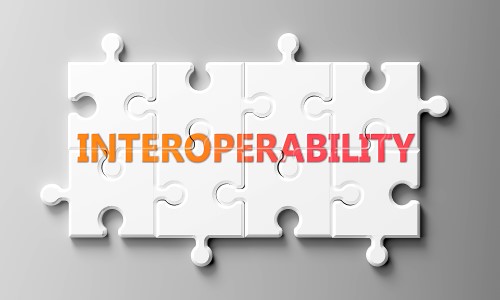5 Ways Interoperability Creates a Better Experience for Customers & Integrators
With the introduction of the IP camera, manufacturers began creating their own codecs or firmware — upending established interoperability. Here’s how ONVIF fixes that.

Until recently, interoperability was not an issue for the video integrator or customer. Any analog camera could present a National Television System Committee (NTSC) signal to any DVR and a live view with the ability to record would be available. It didn’t matter the signal type — analog was analog.
However, with the introduction of the IP camera, all of this changed. Manufacturers began creating their own codecs or firmware that would only work within their proprietary systems.
Since there wasn’t an established signal or communication standard, integrators had to ensure that the cameras, recording device and software were all from the same manufacturer and that firmware matched.
I can still remember meticulously combing through online databases and spreadsheets confirming what cameras would work with what software — and this was not that long ago.
Even if you sold the correct camera and software package, a firmware update might break the integration. It was common for a VMS platform to view a camera feed, but motion detection and p/t/z control still would not work. It was a nightmare for everyone involved.
With the introduction of Open Network Video Interface Forum (ONVIF) Profile S in 2011, an industry standard was established. More than 8,000 devices are now compliant with the Profile S standard, according to the ONVIF website.
Here are five ways this standard has created a better experience for customers and integrators.
1. A solution can be custom designed with different manufacturers that excel in different environments.
Imagine a customer that had all of these needs:
- Large, unlit parking lots requiring a thermal sensor
- Close-up building coverage with color IR
- A touring p/t/z camera to catch a long fence line
- Corridor-view hallway cameras
- Extreme resolution for covering a large stadium
It would be difficult to find one manufacturer that could do all of this well. ONVIF Profile S allows you to customize a solution, regardless of who makes the hardware.
2. Integrators aren’t locked into specific manufacturer partners.
Partnering with a few select manufacturers has its advantages — field teams become more familiar with their product lineup and it’s easier to train and certify technicians.
However, having open platforms that allow for cross-vendor compatibility is very important, and being able to switch between vendors without dropping a beat could mean the difference between satisfying the customer or not. Manufacturers know this and it keeps them on their toes when considering their future R&D and pricing as well.
3. System takeovers become much easier.
If a customer isn’t happy with their existing provider, it now becomes effortless to become the hero. You may not have access to the customer’s existing product, but you can, for example, bring in a fresh VMS platform and reuse their cameras or reuse a VMS and install new cameras.
4. Integration between different access control and video surveillance manufacturers is now possible.
ONVIF Profiles A and C allow for door control, event management and even user management across different brands of video surveillance and access control providers. This is something customers are now starting to demand and include in their RFPs. Creating a centralized location where they can access all of their door and video information streamlines efficiencies and helps them be more proactive and react quicker.
5. Customers can access all of their video surveillance and access control systems in one place, regardless of the platform.
If you can show a potential customer how to take camera streams, event logs and health data from multiple platforms and multiple locations and view them all at once, you’re hired. This is what customers are asking for.
We’re also seeing a surge in software platforms that can monitor every aspect of a system. Seeing hard drive health, current POE power loads and dozens of other statistics across all platforms in one place is now possible. Some solutions even allow automatic ticket creation and give you the ability to fix the issue before the customer even knows there’s a problem.
There are still some manufacturers that are relying on a closed system — and they’re missing out on opportunities to make customers’ lives much easier. We all choose to be part of this industry to make a difference for customers and our communities.
Recommending products that lock a customer into a specific solution is no longer necessary. With the introduction and adoption of interoperability standards, we can, instead, rely on our knowledge, service and reputation to attract and retain customers.
If you enjoyed this article and want to receive more valuable industry content like this, click here to sign up for our FREE digital newsletters!

Security Is Our Business, Too
For professionals who recommend, buy and install all types of electronic security equipment, a free subscription to Commercial Integrator + Security Sales & Integration is like having a consultant on call. You’ll find an ideal balance of technology and business coverage, with installation tips and techniques for products and updates on how to add to your bottom line.
A FREE subscription to the top resource for security and integration industry will prove to be invaluable.














